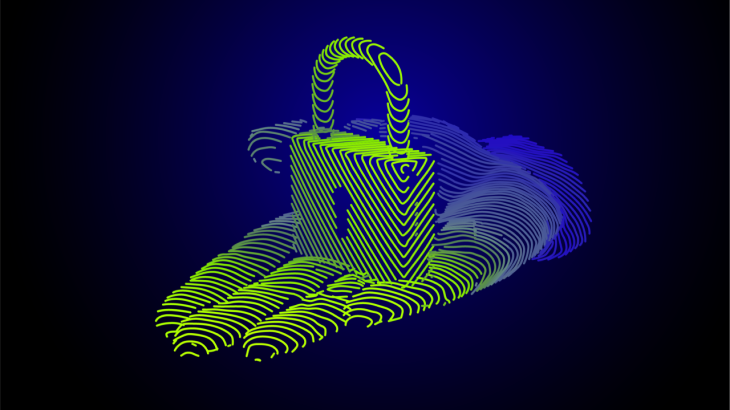
Cloud Entitlement Management: A Critical Layer in Modern Cloud Security
Cloud computing has fundamentally transformed how organizations deploy and manage their IT infrastructure. Today, leading Cloud Service Providers (CSPs) such as Amazon Web Services (AWS), Microsoft Azure, and Google Cloud Platform (GCP) offer a broad spectrum of services designed to help enterprises scale dynamically, reduce operational and energy costs, simplify backup and disaster recovery, and manage resources globally.
Due to these benefits, a growing number of organizations—including both public and private sector institutions—are adopting cloud-based solutions to replace or complement their traditional on-premise systems.
For instance, the UK Government introduced the G-Cloud program in 2013 to promote the adoption of cloud services across its departments, while companies like Xerox offer global, cloud-based print management solutions to their customers.
As more organizations migrate critical workloads and data to the cloud, a parallel increase in security risks- particularly concerning data privacy and system integrity—has become inevitable.
Cloud infrastructures are inherently complex, involving large volumes of identities, resources, and simultaneous interactions across distributed networks.
To ensure security in such environments, robust identity authentication, authorization, and management systems are essential.
IAM and PAM: Foundational, but Not Always Sufficient
According to Gartner, Identity and Access Management (IAM) is a security discipline that enables the right individuals to access the right resources at the right time, and for the right reasons. By implementing IAM solutions, organizations can protect the digital identities, data, and resources they manage—both on-premise and in the cloud.
A typical enterprise environment distinguishes between standard user accounts and privileged user accounts. While standard accounts have limited access to resources, privileged accounts are granted elevated permissions and are therefore more susceptible to abuse if compromised. To mitigate the risks associated with privileged access, many organizations implement Privileged Access Management (PAM) solutions. These platforms enhance traditional IAM systems by offering monitoring, control, and auditing capabilities specifically tailored for privileged accounts.
However, despite their critical roles, IAM and PAM solutions are often not sufficient to manage the full spectrum of risks associated with modern cloud infrastructures.
Security Challenges in Cloud Environments
There are several pressing challenges that emerge when IAM and PAM solutions are applied in multi-cloud or hybrid-cloud environments:
1) Limited visibility and control in multi-cloud ecosystems: Organizations often rely on multiple CSPs, but each provider offers its own approach to identity and permission management. This lack of standardization makes it difficult for enterprises to maintain centralized control.
2) Inconsistent policy definitions across platforms: Authorization models and security policies vary between CSPs. This inconsistency can complicate policy enforcement and auditing, introducing potential security blind spots.
3) Excessive permissions and misconfigurations: Cloud users and services are frequently granted broader access than necessary. This violates the Principle of Least Privilege (PoLP) and creates a high-risk surface area for potential attackers.
4) Orphaned and underused cloud assets: Idle or misconfigured resources—such as unused accounts, virtual machines, or storage buckets—can become unmonitored entry points for attackers if not properly managed.
The Solution: Cloud Infrastructure Entitlement Management
Cloud Infrastructure Entitlement Management (CIEM) has emerged as a complementary approach that extends the capabilities of IAM and PAM into the cloud-native landscape. CIEM platforms are purpose-built to provide deep visibility, oversight, and policy enforcement for cloud identities and entitlements across single or multiple CSPs.
In response to the evolving needs of cloud security, we have presented a robust CIEM product as a key component of our PAM platform, Kron PAM.
This integrated solution is designed to help Cloud Service Consumers (CSCs) manage entitlements more effectively, reduce operational risks, and maintain compliance with security regulations.
Key Features of Our CIEM Product
Our CIEM product is designed to address modern cloud security challenges through the following capabilities:
Comprehensive discovery and centralized visibility across all cloud resources and services from a unified dashboard,
Full integration with major CSPs, including AWS, Azure, and GCP,
Seamless compatibility with Kron PAM, utilizing features like Multi-Factor Authentication (MFA), Single Sign-On (SSO), session monitoring, vault-based credential management, and policy enforcement,
Detailed monitoring and reporting tools to track all user activity, resource usage, and permissions,
Automated detection and cleanup of unused or misconfigured accounts, applications, and devices,
Proactive alerts for potential vulnerabilities, enabling administrators to take timely action,
Support for continuous compliance, helping organizations align with industry standards and regulatory frameworks.
Conclusion
As cloud environments become increasingly complex and dynamic, traditional IAM and PAM tools alone are not sufficient to secure every layer of infrastructure. CIEM fills this critical gap by offering a unified, cloud-native approach to entitlement management.
By leveraging CIEM alongside Kron PAM, organizations can gain full visibility into their cloud identities, enforce least privilege policies, and maintain a strong security posture—across all cloud platforms, at all times.
*Written by Engin Deniz Tümer. He is an Expert Product Owner at Kron.
Highlights
Other Blogs

How Edge Computing Will Drive New Demands for Data Security, Infrastructure Integrity and New IT Policies

From Complexity to Clarity: A Real-World PAM Transformation in Just 6 Weeks
















